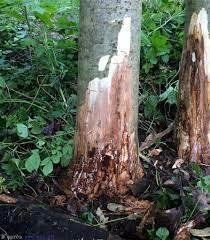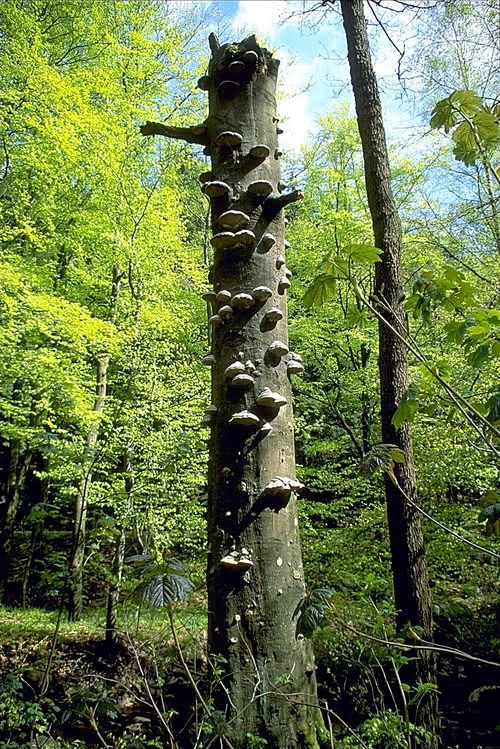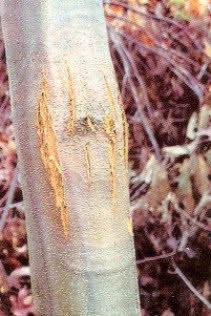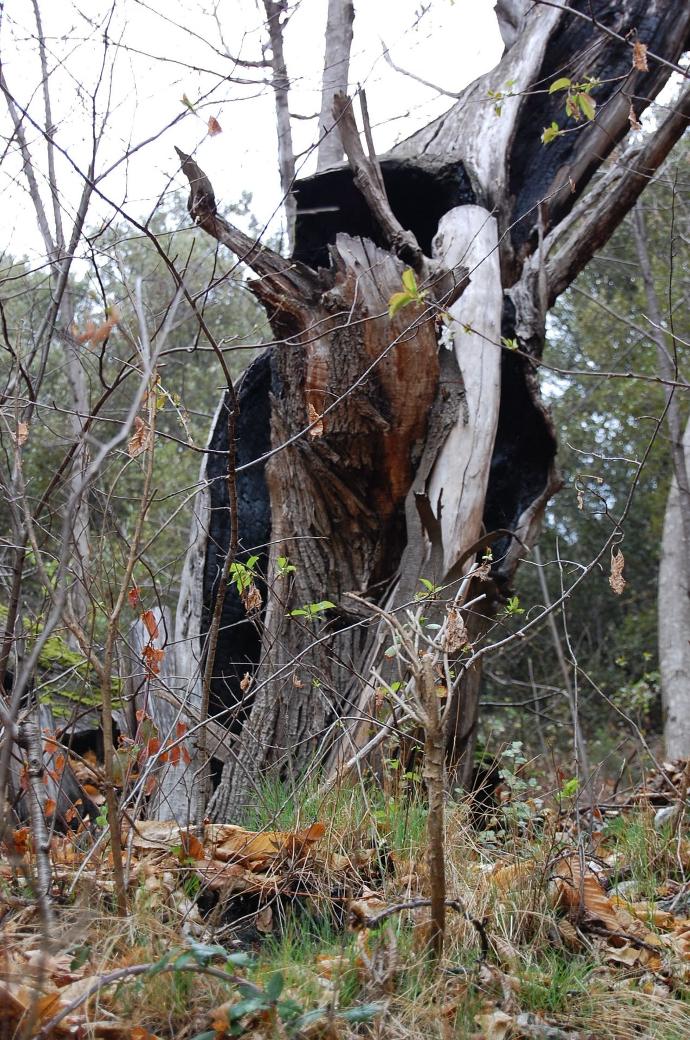Contactez-nous pour Contact us to benefit from our advice!
Source: https://www.ign.fr/reperes/bilan-de-sante-des-forets-francaises
Without proper management, forests tend to decline
Statistics on Standing Dead Trees:
Recent statistics indicate:
- An accelerated increase in the stock of standing dead trees over the last three years.
- 104 million cubic meters of standing dead trees from 2015 to 2019,
- representing 3.5% of the standing wood stock in forests.
- A 30% increase in the stock of standing dead trees of less than five years old from 2018 to 2019.
We have observed a 30% increase in the stock of trees that have died within the last 5 years. This is attributed to various climatic or health stresses that have affected the forest. The stock of living trees, which has been steadily increasing for decades, reached 2,754 million m3 during the same period. Nearly 95% of the observed living trees have less than 5% dead branches. Between the periods of 2008-2012 and 2015-2019, there has been a slight decrease in the number of trees with branch mortality. However, this trend does not necessarily indicate an improvement in overall health. Therefore, we must view this trend in relation to the increase in tree mortality and the slight rise in harvesting activities.
The Relevance of Effective Forest Management:
The stock of dead trees is nearly doubled in private forests without a simple management plan (PSG) from 2015 to 2019. However, this does not necessarily mean that managed forests are in better health, as forest managers may have harvested dead or ailing trees in those forests.
The rate of tree mortality is influenced by the distribution of tree species.
The rate of dead trees is not uniform across the territory and depends on the tree species present and forest management. For example, the chestnut tree's rate of dead trees can reach 50% locally. The proportion of dead trees also varies by region and depends on forest management and the types of trees present. From 2015 to 2019, the chestnut, black locust, ash, Scots pine, and common spruce had the highest average annual rates of dead trees under five years old.
La proportion d'arbres morts varie selon les régions et dépend de la gestion forestière et des types d'arbres présents. Dans la période de 2015 à 2019, le châtaignier, le robinier faux-acacia, le frêne, le pin sylvestre et l'épicéa commun présentent les taux annuels moyens les plus élevés d'arbres morts de moins de cinq ans. De plus, les taux de mortalité tendent à augmenter pour les arbres feuillus, tandis que pour les résineux, ils sont relativement stables.
The chestnut tree, the most affected species
The chestnut tree has been severely affected by various exotic diseases for several decades. Lack of management in orchards and coppices affected by cankers has accelerated the spread of these diseases. Mild winters and dry summers have favored significant ink disease(1) outbreaks, especially in the north.
(1) The term "ink disease" refers to a tree disease caused by fungi that result in a black discoloration of the affected parts of the tree, giving it the appearance of being dipped in ink. The ink disease is therefore an area where this disease spreads significantly.
The Ash Tree and the Chalara Fraxinea Disease:
There has been a continuous increase in the volume of standing dead ash trees from two million cubic meters before 2015 to five million cubic meters in 2018. This increase is due to the chalara Fraxinea disease outbreak since 2015. However, the rate of dead ash trees remains at an average of 3.8%.
The common spruce confronted with bark beetles
The mortality rate of common spruce trees is higher than the average for conifers. It reached 4.3%, with an increase of 0.9 points compared to the average. Hot and dry summers between 2018 and 2020 exacerbated the bark beetle infestation.
Four Bioaggressors Responsible for Forest Degradation:
Chestnut Blight
Discovered in France for the first time in 1956, Cryphonectria parasitica, a fungus native to Asia, causes this pathology. This parasite leads to lesions on the trunk, branches, or shoots. As a result, these lesions often cause the drying out of a part of the tree. However, a hypervirulent virus has yielded good results in the forests of southern France that were previously infected. The cankers gradually heal, causing no further mortality.
Chestnut Ink Disease
Two fungi originating from Asia, Phytophthora cambivora and P. cinnamomi, are responsible for chestnut ink disease. They appeared in France at the end of the 19th century. However, since the 2000s, climatic conditions and cultural practices have favored the spread of these pathogens. Consequently, this has led to an increase in the number of disease outbreaks. Red oak and especially chestnut are the most affected species. Chestnut trees are systematically destroyed by the disease at their root level.
Ash dieback
Unfortunately for our department, it was in Haute-Saône in 2008 that we identified the Asian fungus Hymenoscyphus fraxineus. This fungus causes the disease known as ash dieback or chalara. The devastating effects of this disease result in rapid mortality of young ash trees, as well as collar necrosis that weakens older trees in just a few years. The rate of trees without symptoms is low, which leaves little hope for the future of this species for production. An example of ash dieback in this article.

The spruce bark beetles
Native insects, particularly the engraver beetle and the Ips typographus, are spruce bark beetles that primarily target weakened trees. However, when weather conditions change, such as during droughts or heatwaves, these insects multiply rapidly and attack healthy trees. Unlike fir bark beetles, they are resilient and even after the favorable conditions end, their populations continue to grow for several years.
Source photo title: https://www.leparisien.fr/val-d-oise-95/comment-la-maladie-de-l-encre-devore-rapidement-les-forets-d-ile-de-france-19-02-2021-8425562.php



